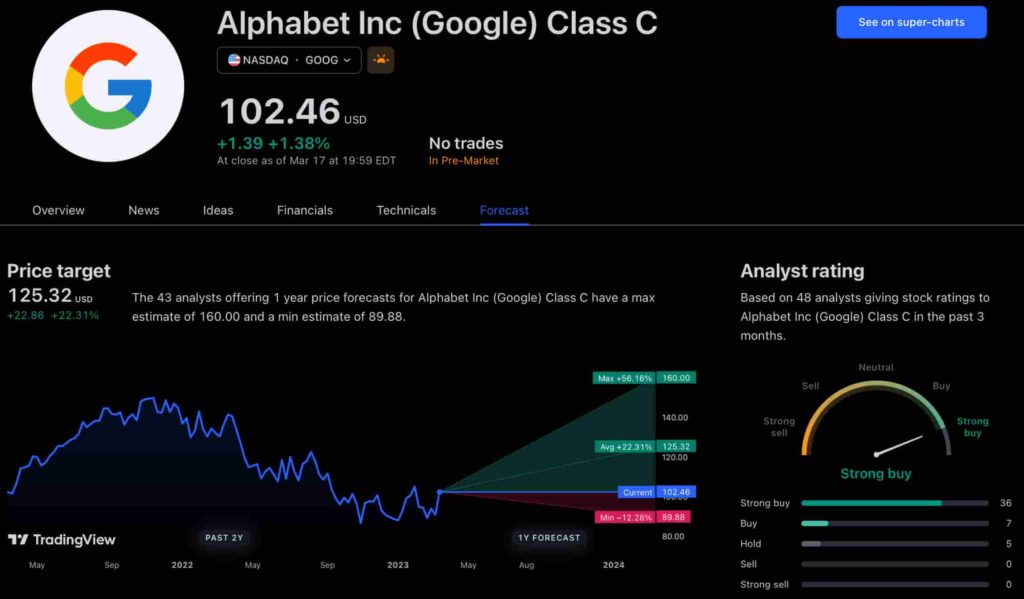The new app is called watchGPT and as I tipped off already, it gives you access to ChatGPT from your Apple Watch. Now the $10,000 question (or more accurately the $3.99 question, as that is the one-time cost of the app) is why having ChatGPT on your wrist is remotely necessary, so let’s dive into what exactly the app can do.
NEWS
Twitter Says it’s Suspended More Than 70,000 Accounts Following the Capitol Riots

Have you noticed a drop in your Twitter follower numbers of late?
You’re not alone – though that may reveal an uncomfortable truth about your audience that you may also need to deal with.
According to a new update from Twitter, in the wake of the Capitol riots last Wednesday, it launched a mass purge of accounts that it found were primarily dedicated to sharing QAnon content.
As per Twitter:
“Many of the individuals impacted by this updated enforcement action held multiple accounts, driving up the total number of accounts impacted. Since Friday, more than 70,000 accounts have been suspended as a result of our efforts.”
Twitter says that these accounts “were engaged in sharing harmful QAnon-associated content at scale and were primarily dedicated to the propagation of this conspiracy theory across the service”.
Twitter notes that, along with its regular spam account challenges, which it also warned about late last week, this new action against QAnon related accounts has seen some profiles lose thousands of followers in a matter of days.
To clear up confusion about fluctuations in follower counts:
In order to prevent spam, we regularly challenge accounts to confirm details like email and phone number. Until that info is confirmed, these accounts aren’t included in follower counts. https://t.co/8BYcBCmxxA
— Twitter Support (@TwitterSupport) January 9, 2021
So that’d be it – if you’re seeing a big drop in your followers it’s likely because you were followed by a lot of QAnon supporters and/or bots. Probably not your ideal demographic profile, and it might be a good prompt to refresh your brand messaging.
In addition to the account purge, Twitter has also outlined its updated approach to misinformation about the election – or as Twitter puts it ‘violations of our civic integrity policy’. The revised strategy will include improved automated detection tools to weed out problematic tweets related to the election result, while Twitter will also look to ban accounts with tweets that are repeatedly labeled for violations of its policy.
Twitter has also moved to limit interaction with labeled tweets:
“On Tuesday, we limited engagement by no longer allowing any Tweets labeled for violations of our civic integrity policy to be replied to, Liked or Retweeted. People on Twitter are still able to Quote Tweet to share this content with additional context or their own perspective.”
That could limit the spread of such claims by reducing discussion and engagement.
And finally, Twitter also says that it has blocked several keywords from Search and Trends as a result of their connection to election misinformation. TikTok and Instagram also blocked several hashtags and terms that related to the Capitol protests, while earlier today, Facebook announced that it would remove all posts which include the phrase ‘stop the steal’ heading into Inauguration Day.
The updated enforcement measures are the latest in the broader removal of conspiracy theories relating to the election, in order to avoid further civil unrest. The results of the election have now been certified, after facing several legal challenges from the Trump administration, and as such, the continued speculation of alleged voter fraud only serve to further provoke an already divided America.
Lessening the discussion makes sense within the context of civil unrest, but many will see this as continued censorship, and it’s important that all the major platforms do use this incident as a guidepost to define a more concrete strategy to avoid the same moving forward.
That’s not easy to do – effective moderation also needs to evolve with users and usage trends. But the Capitol riots brought the threat of social media-inspired unrest to the very heart of US democracy, and there can be no denying the potential of similar uprisings moving forward.
Facebook Faces Yet Another Outage: Platform Encounters Technical Issues Again

Uppdated: It seems that today’s issues with Facebook haven’t affected as many users as the last time. A smaller group of people appears to be impacted this time around, which is a relief compared to the larger incident before. Nevertheless, it’s still frustrating for those affected, and hopefully, the issues will be resolved soon by the Facebook team.
Facebook had another problem today (March 20, 2024). According to Downdetector, a website that shows when other websites are not working, many people had trouble using Facebook.
This isn’t the first time Facebook has had issues. Just a little while ago, there was another problem that stopped people from using the site. Today, when people tried to use Facebook, it didn’t work like it should. People couldn’t see their friends’ posts, and sometimes the website wouldn’t even load.
Downdetector, which watches out for problems on websites, showed that lots of people were having trouble with Facebook. People from all over the world said they couldn’t use the site, and they were not happy about it.
When websites like Facebook have problems, it affects a lot of people. It’s not just about not being able to see posts or chat with friends. It can also impact businesses that use Facebook to reach customers.
Since Facebook owns Messenger and Instagram, the problems with Facebook also meant that people had trouble using these apps. It made the situation even more frustrating for many users, who rely on these apps to stay connected with others.
During this recent problem, one thing is obvious: the internet is always changing, and even big websites like Facebook can have problems. While people wait for Facebook to fix the issue, it shows us how easily things online can go wrong. It’s a good reminder that we should have backup plans for staying connected online, just in case something like this happens again.
NEWS
We asked ChatGPT what will be Google (GOOG) stock price for 2030

Investors who have invested in Alphabet Inc. (NASDAQ: GOOG) stock have reaped significant benefits from the company’s robust financial performance over the last five years. Google’s dominance in the online advertising market has been a key driver of the company’s consistent revenue growth and impressive profit margins.
In addition, Google has expanded its operations into related fields such as cloud computing and artificial intelligence. These areas show great promise as future growth drivers, making them increasingly attractive to investors. Notably, Alphabet’s stock price has been rising due to investor interest in the company’s recent initiatives in the fast-developing field of artificial intelligence (AI), adding generative AI features to Gmail and Google Docs.
However, when it comes to predicting the future pricing of a corporation like Google, there are many factors to consider. With this in mind, Finbold turned to the artificial intelligence tool ChatGPT to suggest a likely pricing range for GOOG stock by 2030. Although the tool was unable to give a definitive price range, it did note the following:
“Over the long term, Google has a track record of strong financial performance and has shown an ability to adapt to changing market conditions. As such, it’s reasonable to expect that Google’s stock price may continue to appreciate over time.”
GOOG stock price prediction
While attempting to estimate the price range of future transactions, it is essential to consider a variety of measures in addition to the AI chat tool, which includes deep learning algorithms and stock market experts.
Finbold collected forecasts provided by CoinPriceForecast, a finance prediction tool that utilizes machine self-learning technology, to anticipate Google stock price by the end of 2030 to compare with ChatGPT’s projection.
According to the most recent long-term estimate, which Finbold obtained on March 20, the price of Google will rise beyond $200 in 2030 and touch $247 by the end of the year, which would indicate a 141% gain from today to the end of the year.
Google has been assigned a recommendation of ‘strong buy’ by the majority of analysts working on Wall Street for a more near-term time frame. Significantly, 36 analysts of the 48 have recommended a “strong buy,” while seven people have advocated a “buy.” The remaining five analysts had given a ‘hold’ rating.

The average price projection for Alphabet stock over the last three months has been $125.32; this objective represents a 22.31% upside from its current price. It’s interesting to note that the maximum price forecast for the next year is $160, representing a gain of 56.16% from the stock’s current price of $102.46.
While the outlook for Google stock may be positive, it’s important to keep in mind that some potential challenges and risks could impact its performance, including competition from ChatGPT itself, which could affect Google’s price.
Disclaimer: The content on this site should not be considered investment advice. Investing is speculative. When investing, your capital is at risk.
NEWS
This Apple Watch app brings ChatGPT to your wrist — here’s why you want it

ChatGPT feels like it is everywhere at the moment; the AI-powered tool is rapidly starting to feel like internet connected home devices where you are left wondering if your flower pot really needed Bluetooth. However, after hearing about a new Apple Watch app that brings ChatGPT to your favorite wrist computer, I’m actually convinced this one is worth checking out.
-

 PPC6 days ago
PPC6 days agoCompetitor Monitoring: 7 ways to keep watch on the competition
-

 PPC5 days ago
PPC5 days agoA History of Google AdWords and Google Ads: Revolutionizing Digital Advertising & Marketing Since 2000
-

 SEARCHENGINES6 days ago
SEARCHENGINES6 days agoMore Google March 2024 Core Update Ranking Volatility
-

 PPC6 days ago
PPC6 days ago31 Ready-to-Go Mother’s Day Messages for Social Media, Email, & More
-

 WORDPRESS6 days ago
WORDPRESS6 days agoThrive Architect vs Divi vs Elementor
-

 WORDPRESS5 days ago
WORDPRESS5 days agoTurkish startup ikas attracts $20M for its e-commerce platform designed for small businesses
-

 MARKETING4 days ago
MARKETING4 days agoRoundel Media Studio: What to Expect From Target’s New Self-Service Platform
-

 MARKETING6 days ago
MARKETING6 days agoHow To Adapt Your SEO and Content Strategies for SGE and AI Experiences


